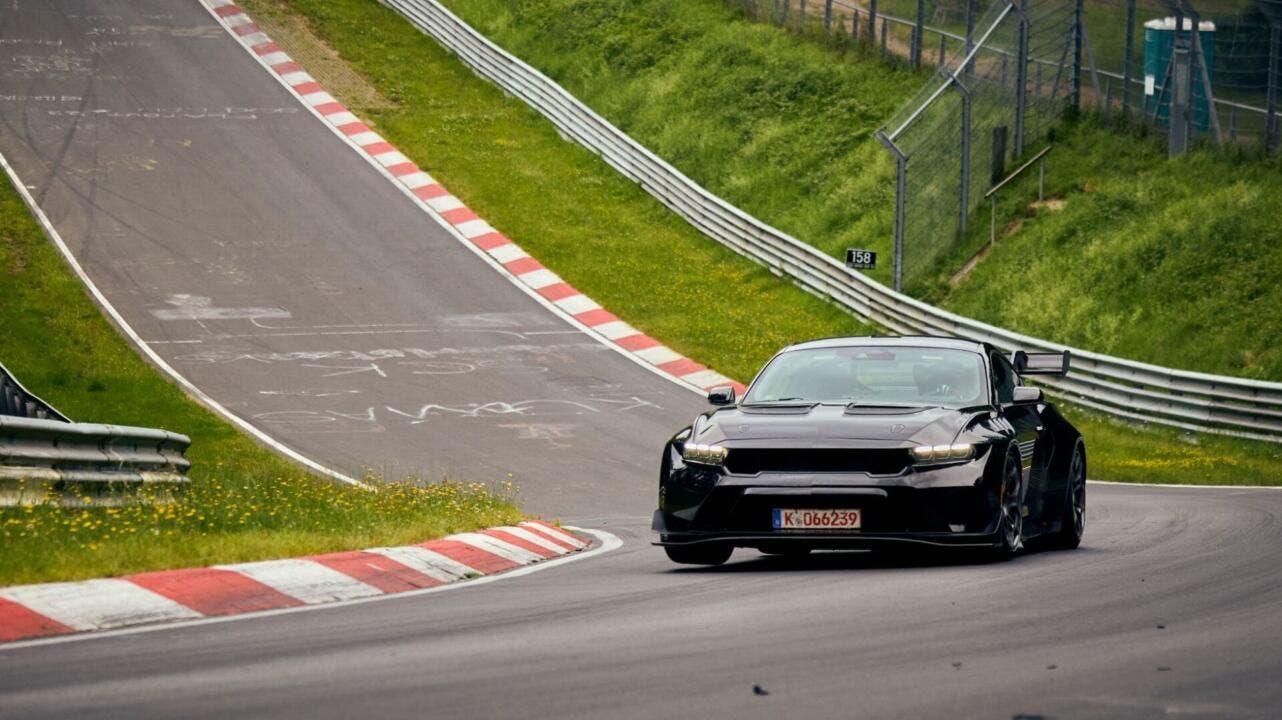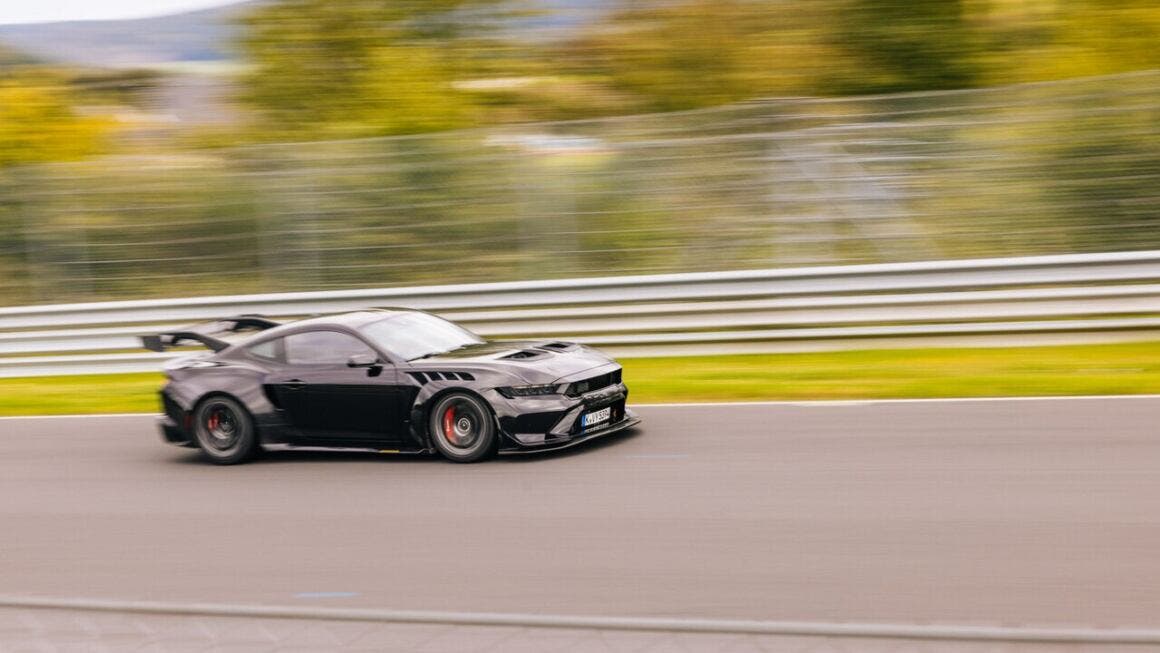For the new Mustang GTD, Ford didn’t treat the Nürburgring as a racetrack, it treated it as a rolling workshop. Between laps, engineers were 3D-printing new parts right in the pit lane, bolting them on, and sending performance data back to Detroit the very same day. Think of it as a Formula 1-style evolution lab, where additive manufacturing replaced weeks of tooling delays with real-time innovation.
After setting a 6:57.685 lap in 2024, the first sub-seven-minute run ever by an American brand, the GTD shaved that down to 6:52.072 in April 2025, both times driven by Dirk Müller on the full 12.94-mile (20.832 km) Nürburgring circuit.

The last secret weapon? Tiny 3D-printed aerodynamic pieces called “hood flicks”, fitted around the front air intakes. Chief engineer Greg Goodall describes them as “little raised ski ramps” that increase front-end downforce without hurting drag, a delicate aerodynamic magic trick.
Under the hood lies a 5.2-liter supercharged V8 pushing 815 HP, paired with an eight-speed rear-mounted dual-clutch transmission and Michelin Pilot Sport Cup 2 R tires. But the real breakthrough came from the team’s ability to design, print, and test new aero surfaces in a single test window, seven or eight design iterations and twenty drag simulations later, they found the perfect shape, later verified in the Michigan wind tunnel.

The Multimatic Adaptive Spool Valve dampers provide dual suspension settings, with Track Mode lowering the car by four centimeters for improved balance. At the back, a swan-neck rear wing, sharing DNA with the Mustang GT3, works in harmony with the front-end flicks for seamless airflow.
The result places the GTD among the fastest street-legal cars ever to lap the Nordschleife, just behind the Porsche 911 GT3 RS and ahead of the Ferrari 296 GTB. Ford says the GTD project is far from over. It’s part of the company’s revamped Ford Racing initiative, designed to bring motorsport technology to production vehicles faster than ever.
The 3D-printing philosophy has already expanded to other programs, including cooling plates for the upcoming Red Bull F1 power unit.
